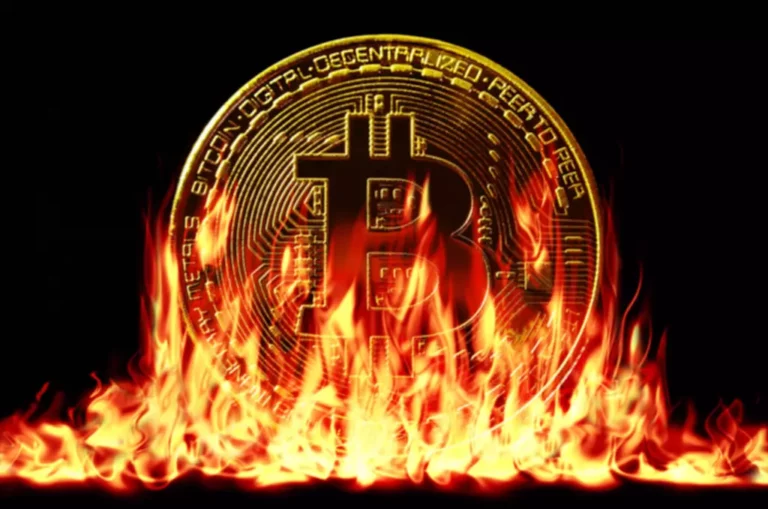Content
Due to various bugs in this version, the decision was made to opt for a single-threaded model without multiprocessing. Below is a flowchart that illustrates the control flow of the original program. The contents of the caches listed above are inserted into a Treeview, which is a structure used by the Tkinter GUI module for displaying tabular data. It contains three tables which display the bids, offers and filled orders. While a centralized engine is susceptible to matching engine software attacks due to its reliance on a central server, a decentralized engine, operating on a distributed network, offers more resilience against potential breaches.
Which Matching Order Algorithms are used in Electronic Trading Systems?
The NSE was established in 1992 and became the first electronic stock exchange in India. The BSE, which was founded in 1875, introduced an electronic trading platform in 1995. Diving deeper into the Proof of work mechanics of a matching engine reveals the critical role of the order book. This component records every transaction intent and actively shapes the market dynamics through real-time updates and interactions between buyers and sellers.
Advantages And Disadvantages of Crypto Matching Engines

A depth chart could be derived from the order book and represented in the GUI on another pane. The match() function evaluates two best quotes, one from either side of the book, and evaluates them to determine if they satisfy each other’s price https://www.xcritical.com/ parameters. If a trade can be consummated, a tx (transaction) is created, and the appropriate quantity or order is removed from the book. The transaction is passed to the fill book, which is a record of all filled orders. The S&P Midcap 400/BARRA Growth is a stock market index that provides investors with a benchmark for mid-cap companies in the United States. The order matching system is a prime target for cyberattacks, and protecting the system from such threats is a top priority.
Experience DXmatch, a matching engine by Devexperts
Electronic Trading Systems employ robust security measures, including encryption and authentication protocols, to protect user data and prevent unauthorized access. NASDAQ is another electronic trading platform that was established in 1971. It began as a platform for trading Over-The-Counter (OTC) equities but has now evolved to cover other financial instruments.


It ensures regulatory compliance and supports swap contract execution. DXmatch is Devexperts’ proprietary order matching engine designed for ultra-low latency and high throughput applications. It is trusted by regulated securities exchanges, dark pools, cryptocurrency exchanges, and OTC venues worldwide. In these applications, bare metal systems that are co-located in exchange data centers are essential. In these cases, even the shortness of the cables used to connect client servers to exchange matching engines can confer a minuscule advantage on one participant over another. Of course, there are multi-asset matching engines, like DXmatch, that are completely agnostic to the underlying assets they work with.
This not only enhances the overall user experience but also significantly reduces the risk of slippage, which is a key concern in volatile markets. A cryptocurrency matching engine is a system that matches bid orders with sellers, connecting market traders to execute trades in milliseconds. These engines deploy different algorithms to fulfil orders using various approaches like first-in, first-out, or giving priority to order requests at higher volumes or prices. An RFQ is an essential component that helps traders and investors make informed decisions based on competitive pricing and other relevant factors in electronic trading systems. Order matching in an electronic trading system operates through eight vital steps. Within the stock market, this system diligently pairs buy and sell orders, primarily focusing on price and time priorities.
Using an advanced bare metal setup, our own DXmatch engine can deliver wall-to-wall latency of under 100 microseconds via FIX API. The S&P SmallCap 600 is a stock market index introduced by Standard & Poor’s. It covers a broad range of small-cap companies in the United States, providing a comprehensive benchmark for inve… Since this price is lower than the highest bid (User A’s $36,000), the system attempts to match User X’s ask order with the available bids.
- Below are the five stock markets that use electronic trading and their origin.
- During periods of high volatility, the latency is usually much larger.
- The Matching Principle in the Matching Order System is a fundamental concept in accounting that ensures expenses are reported in the same financial period as the revenues they generate.
- Furthermore, by encouraging competition among traders, order matching systems can lead to narrower spreads, which can further enhance market liquidity and efficiency.
- It began as a platform for trading Over-The-Counter (OTC) equities but has now evolved to cover other financial instruments.
This involves placing large orders to create artificial price movements or exploiting weaknesses in trading algorithms. An order matching system refers to the electronic process of matching buy & sell orders of a stock exchange or other similar financial exchanges. An order matching system is an electronic platform that automatically pairs buy and sell orders for securities based on criteria like price and quantity. Some matching engines use an algorithm to maximize trade volumes by finding the largest possible match between buy and sell orders. This method may delay executions slightly to aggregate and match larger volumes, potentially leading to higher overall market liquidity and reduced price slippage.
From there, the computerized, order-matching systems of different exchanges use a variety of methods to prioritize orders for matching. An LMM order at the same price level as the top order will receive the LMM match percentage allocation before the top order allocation. LMM matching rules apply first and top order matching rules apply thereafter. DXmatch ensures traders won’t enter an erroneous order with a price that’s too far from the market price.
Another approach, “Pro-Rata,” favors larger orders, ensuring they enjoy a proportionally larger share of available liquidity. The system dequeues elements with higher priority before those with lower priority. For order matching, priority queues manage buy and sell orders based on their prices. Generally, a buy order and a sell order are compatible if the maximum price of the buy order matches or exceeds the minimum price of the sell order.
One of its main tasks is to regulate electronic trading platforms in order to ensure that they are fair and transparent. The CFTC also prevents fraudulent activities such as market manipulation and insider trading. The CFTC monitors electronic trading to identify potential risks to market stability and takes action to prevent or mitigate these risks. All stock markets currently use electronic trading, and the above is just the top five list of stock exchanges. Then it determines the available quantity of the financial instrument at these price levels and calculates the total size of orders at the best bid and offer prices. It allocates the available quantity proportionally to the size of each order at these price levels, and orders with higher pro-rata allocation receive priority for execution.
A price-time priority algorithm is a fundamental approach used in order-matching systems. It prioritizes the highest bid with the lowest ask to ensure the best available price for trade execution. The algorithm compares the prices of buy and sell orders, giving preference to orders with the most favorable prices.
DXmatch is delivered as RPM-packaged applications for installation to any RPM-based Linux operating system (RedHat, Oracle, CentOS, OpenSUSE, Rocky Linux). Limits the number of messages received per second from a market participant. Automatically cancel all orders of a market participant in the event of a FIX API’s disconnect.
Another chart could display the process of order price determination. This would be represented by a graph with an outline of a normal distribution and an arrow or line representing the sampling of the distribution each time an order was generated. Depth refers to the ability of a market for a specific asset to sustain large orders of that asset without the asset’s price moving significantly. Once an order has been generated, it is added to one side of the book. It’s side is dependent on whether it is a buy or sell order, and its position in the book is determined by its price and type. The S&P MidCap 400 is a benchmark index that represents the mid-cap segment of the U.S. stock market.
In this article, we’ll give you an insight into what an order matching engine is, the mechanics behind it, and what to pay attention to when choosing one for your exchange or dark pool. The control flow of the program is detailed by the flowchart shown below. At runtime, main() initialises many of the data structures used by the rest of the application. It selects the best quote on either side of the book and consummates a trade if each order satisfies a certain price.
